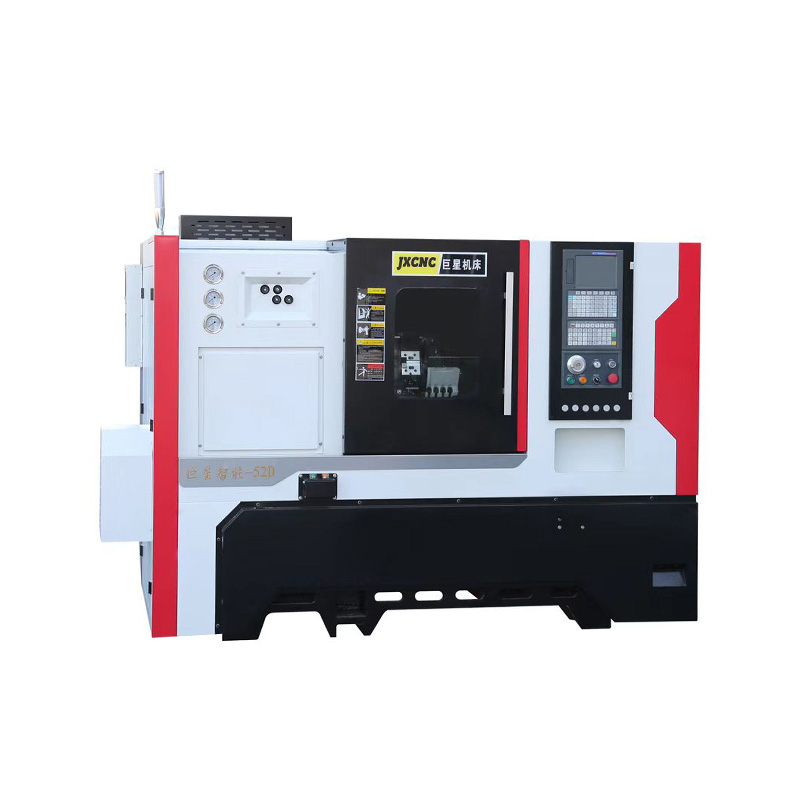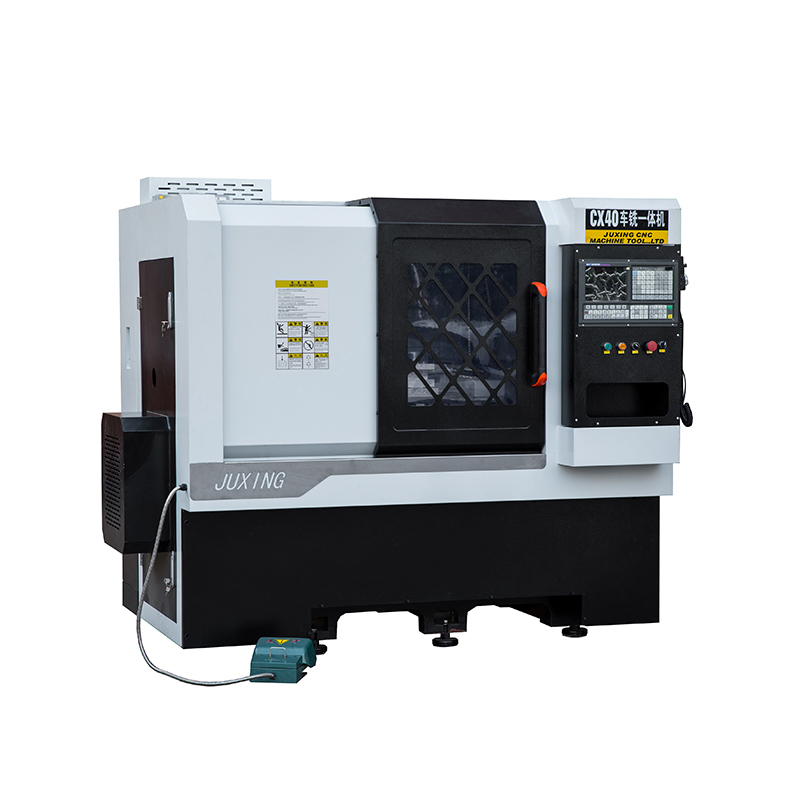CF32 Hydraulic Clamping CNC Polygon Turning Machine
Cat:Small Polygon Lathe
CF32 hydraulic clamping CNC polygon lathe is designed for milling small and medium-sized high-precision parts, which can mill square, octagonal, hexag...
See DetailsUnderstanding the Working Principle of CNC Turning Machines

To understand how a CNC turning machine factory differs from other machine tool facilities, it is important to explore how CNC turning machines operate. CNC, or Computer Numerical Control, technology uses computer programming to automate the cutting, shaping, and finishing of materials. A CNC turning machine typically rotates the workpiece while a stationary cutting tool removes material to form the desired shape. This process contrasts with milling machines or drilling machines, which keep the workpiece stationary while the cutting tool rotates.
A CNC turning machine factory focuses on precision and repeatability. The machines are controlled through digital commands generated by CAD (Computer-Aided Design) and CAM (Computer-Aided Manufacturing) software. These programs allow engineers to input exact measurements, cutting speeds, and feed rates. Once programmed, the machine performs the same operation with consistent accuracy, reduce the risk of human error.
Unlike conventional manual lathes, CNC turning machines can execute complex geometries that would be difficult or time-consuming for an operator to achieve manually. They are capable of producing cylindrical parts such as shafts, bushings, and pulleys with tight tolerances. This makes them ideal for industries like aerospace, automotive, and electronics manufacturing, where precision is essential.
Additionally, the CNC turning machine factory environment is often characterized by automation and efficiency. Multiple machines can be operated simultaneously by a single technician, reducing labor costs while increasing production output. In comparison, manual machine tools typically require constant supervision and adjustment, which can slow production and inconsistent results.
In summary, the main operational difference lies in the use of computer control, automation, and precision. These factors make CNC turning machines highly reliable for repetitive, high-accuracy production runs that are difficult to achieve with traditional machine tools.
Comparing Efficiency, Precision, and Production Capabilities
One of the noticeable distinctions between CNC turning machines and other machine tools lies in their efficiency and production capacity. A CNC turning machine factory places a strong emphasis on automation, which allows for continuous operation. Once the parameters are programmed, the machine can run for long periods with minimal human intervention. This capability greatly enhances productivity, especially in large-scale production environments.
By contrast, conventional machines such as manual lathes or milling tools rely heavily on operator skill. Each part may need to be measured and adjusted individually, which slows down production. The consistency achieved by CNC technology ensures that every part produced is nearly identical to the last. This level of uniformity is particularly important for industries that require mass production with precise dimensions.
In terms of accuracy, CNC turning machines can achieve tolerances as tight as a few microns, depending on the material and tooling used. Traditional machines, even when operated by skilled machinists, may struggle to maintain such precision over extended runs. The digital feedback systems in CNC turning machines monitor the cutting process in real time, automatically correcting deviations to maintain accuracy.
Another advantage seen in a CNC turning machine factory is flexibility. These machines can switch between product types quickly by changing programs rather than reconfiguring hardware. In contrast, conventional machines require manual adjustments and setup changes, which consume valuable time and resources.
Finally, CNC machines offer better integration with digital manufacturing systems. Data can be shared directly from design software to the production floor, creating a seamless flow of information. This digital integration minimizes errors and shortens lead times, giving the CNC turning machine factory a competitive edge over facilities using traditional tools.
Maintenance, Cost Considerations, and Long-Term Benefits
While CNC turning machines have many advantages, understanding their cost and maintenance requirements helps highlight further differences from traditional machine tools. Initially, a CNC turning machine factory may face higher setup costs. CNC machines are complex and require significant investment in hardware, software, and skilled technicians. However, the long-term benefits of reduced waste, higher output, and consistent quality often justify the expense.
In terms of maintenance, CNC turning machines require specialized care to ensure continued performance. Regular calibration, lubrication, and software updates are necessary. Many modern CNC machines feature built-in diagnostic tools that alert operators when maintenance is due. This proactive approach prevents unexpected breakdowns and ensures uninterrupted production. Traditional machines, by contrast, often rely on manual inspections, which can miss early signs of wear or damage.
Energy efficiency is another consideration. Modern CNC turning machines are designed to optimize power consumption during operation. The automation allows for efficient use of resources, whereas older mechanical tools may consume more energy and produce more waste material. Over time, this efficiency contributes to the sustainability and cost-effectiveness of the CNC turning machine factory.
Additionally, CNC machines enhance workplace safety. Since operations are automated, operators are less exposed to moving parts or sharp tools. Training programs at CNC facilities often emphasize digital operation and machine monitoring rather than manual machining techniques. This shift improves both productivity and worker safety.
Lastly, CNC technology offers scalability for future production demands. As new designs or materials emerge, existing CNC systems can be reprogrammed without replacing the equipment. This adaptability ensures that a CNC turning machine factory remains competitive in a rapidly evolving manufacturing environment.

